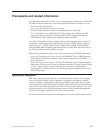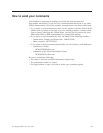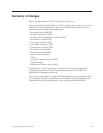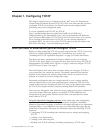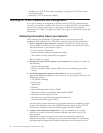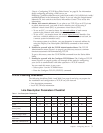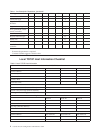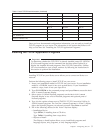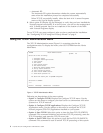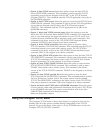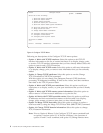
v Working with TCP/IP host tables, including configuring a TCP/IP host name
and domain name
v Verifying a TCP/IP connection (PING)
Planning for TCP/IP Installation and Configuration
If you are in charge of configuring an iSeries server for TCP/IP communications
you will, in most cases, include your server in an existing TCP/IP network. Before
you are able to start configuring, you will need to collect all of the required
information. Use Table 1 on page 3 and Table 2 on page 4 as checklists to record this
information.
Gathering Information About your Network
After collecting the preliminary information about your network, plan the
installation and configuration of TCP/IP by using the steps that are listed below:
1. Draw a diagram of your network: A diagram will help you decide how you
want to attach your iSeries server to the other systems in the network. Include
data that relates to your network, such as:
v Line description information
v Internet Protocol addresses and domain names
v The number of route entries that are required
Refer to Table 1 on page 3.
2. Identify the names of the systems in your network: For example, do either of
the following:
v Build a local host table.
v Identify a Domain Name System (DNS) server for maintaining host table
entries.
3. Install the appropriate hardware and software: You must install the
appropriate hardware adapters in your server if you are going to connect to the
following networks:
v X.25 packet-switching
v Frame relay
v Token-ring
v Ethernet
v Fiber distributed data interface (FDDI)
v Shielded twisted pair distributed data interface (SDDI)
v Wireless local area network (LAN)
v Synchronous or asynchronous communications line
v Twinaxial data link support (TDLC)
You also need to make sure that the appropriate software is installed on all the
systems. On the iSeries server, the OS/400 licensed program and the TCP/IP
Connectivity Utilities for iSeries licensed program must be installed.
4. Assign names and Internet addresses: If you are attaching to an existing
network, you need to know the Internet addresses and names used by the
other systems.
Depending on the size of your network and its complexities, determine
whether a host table or a DNS server is the preferred method for maintaining
and updating host name and IP address associations. In this chapter, refer to
2 OS/400 TCP/IP Configuration and Reference V5R1




